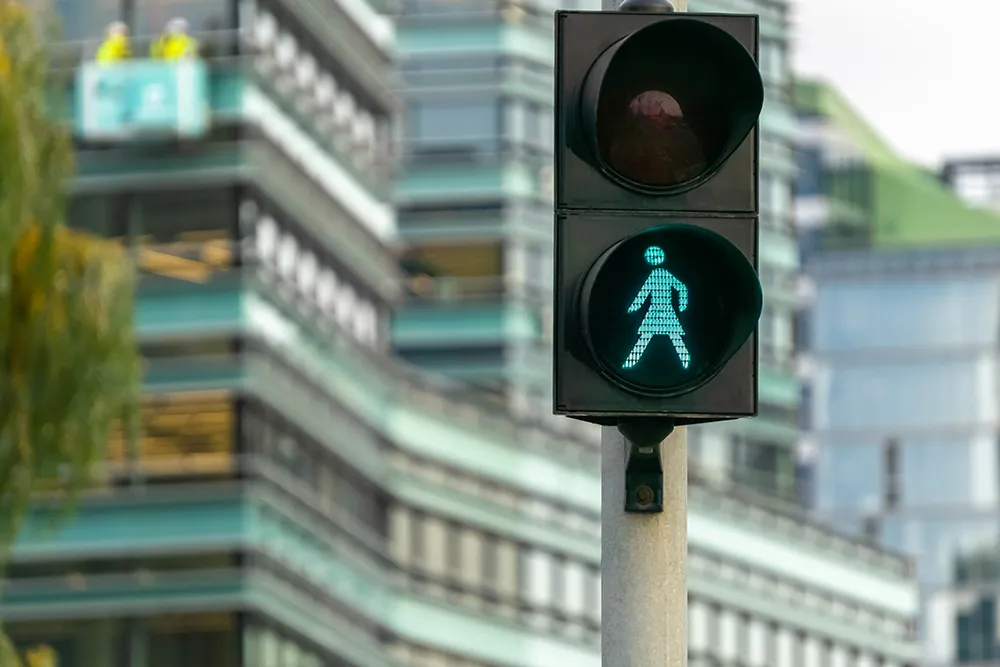Engineering consultancy Ramboll has today published analysis on the potential revenue which could be generated by motorway advertising on gantries, designed to appeal to driverless car passengers. Figures have shown suggested income of over US$5.4 million (£4.5 million) in 2026, rising steadily over subsequent years as the new technology is introduced and leading to total revenue between 2025 and 2070 of over US$4.8 billion (£4 billion).
Many have estimated that self-driving cars are likely to be common
October 28, 2016
Read time: 2 mins
Engineering consultancy Ramboll has today published analysis on the potential revenue which could be generated by motorway advertising on gantries, designed to appeal to driverless car passengers. Figures have shown suggested income of over US$5.4 million (£4.5 million) in 2026, rising steadily over subsequent years as the new technology is introduced and leading to total revenue between 2025 and 2070 of over US$4.8 billion (£4 billion).
Many have estimated that self-driving cars are likely to be commonplace within the next 10 years, rendering gantries that provide driver information obsolete. However, by using the infrastructure and available space for advertising, Ramboll has signalled potentially profitable business opportunities.
The figures have been drawn up based on predictions of the uptake of driverless cars and the average cost of advertising space in such areas. The research found that annual revenue will peak in 2050, at US$178 million (£147 million), then slowly decline as the existing gantry structures approach the end of their predicted lifespan.
Taxi companies such as Lyft and Uber are already in operation with self-driving cars in San Francisco, Pittsburgh and Phoenix, and uptake continues to spread. Our communities are built around cars and the transport team at Ramboll predict cities and roads will be transformed over the next century due to the widespread uptake of driverless cars.
While advertising on motorways is currently limited due to the potential for adverts to distract drivers, driverless cars mean this could be lifted, and passengers provide a clear captive audience. Far from being obsolete, overhead structures such as gantries could therefore be considered valuable future assets that enable businesses to capitalise on this transport revolution.
Stephen Knox, Engineer at Ramboll commented: “This research presents exciting opportunities for the future of highways. As environmental consultants we at Ramboll are always keen to remain ahead of the game in terms of predicting how our infrastructure must adapt to future social and technological changes. In providing a potential use for soon to be redundant gantries, we could open many doors, and it is vital that both business and government take the time to consider these.”
Many have estimated that self-driving cars are likely to be commonplace within the next 10 years, rendering gantries that provide driver information obsolete. However, by using the infrastructure and available space for advertising, Ramboll has signalled potentially profitable business opportunities.
The figures have been drawn up based on predictions of the uptake of driverless cars and the average cost of advertising space in such areas. The research found that annual revenue will peak in 2050, at US$178 million (£147 million), then slowly decline as the existing gantry structures approach the end of their predicted lifespan.
Taxi companies such as Lyft and Uber are already in operation with self-driving cars in San Francisco, Pittsburgh and Phoenix, and uptake continues to spread. Our communities are built around cars and the transport team at Ramboll predict cities and roads will be transformed over the next century due to the widespread uptake of driverless cars.
While advertising on motorways is currently limited due to the potential for adverts to distract drivers, driverless cars mean this could be lifted, and passengers provide a clear captive audience. Far from being obsolete, overhead structures such as gantries could therefore be considered valuable future assets that enable businesses to capitalise on this transport revolution.
Stephen Knox, Engineer at Ramboll commented: “This research presents exciting opportunities for the future of highways. As environmental consultants we at Ramboll are always keen to remain ahead of the game in terms of predicting how our infrastructure must adapt to future social and technological changes. In providing a potential use for soon to be redundant gantries, we could open many doors, and it is vital that both business and government take the time to consider these.”










